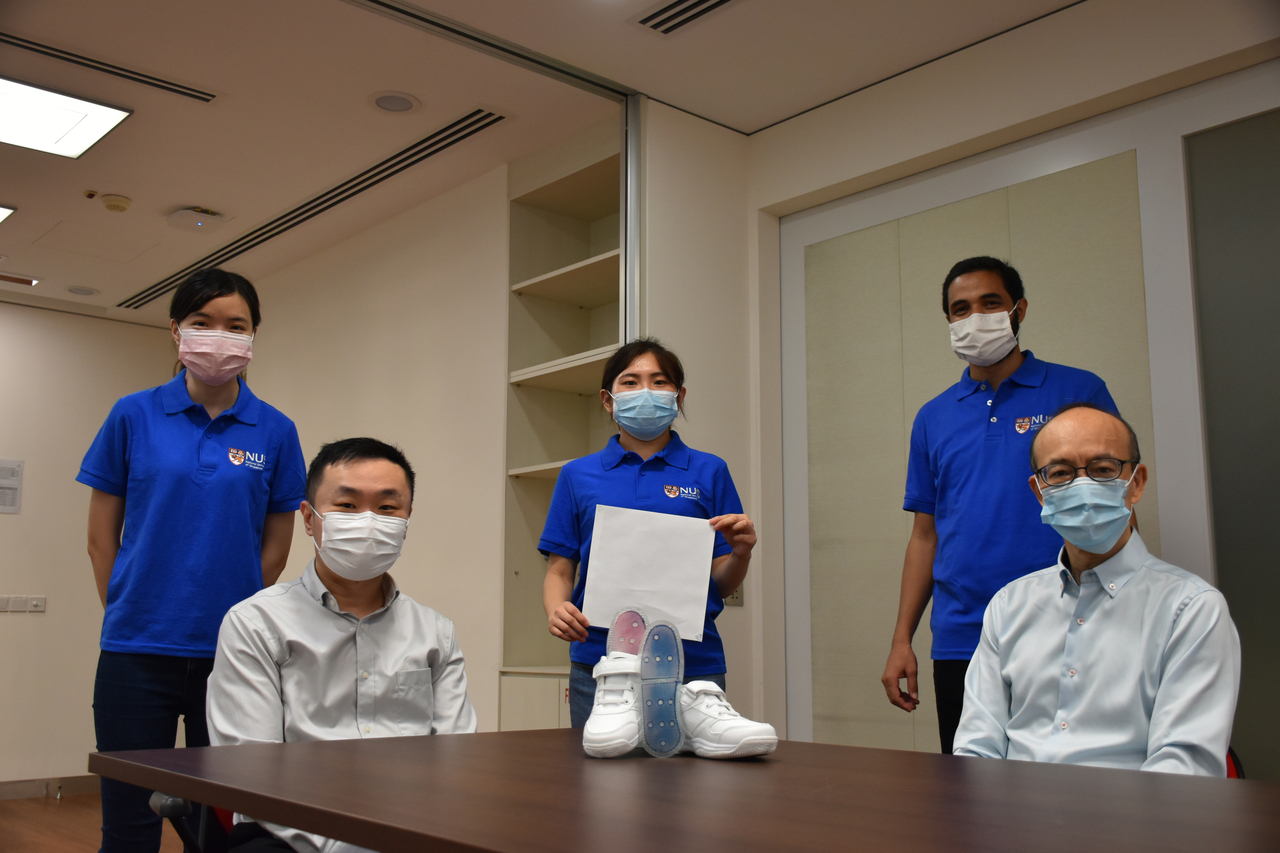NUS researchers develop film to enhance sweat evaporation
Sign up now: Get ST's newsletters delivered to your inbox

An NUS research team led by Assistant Professor Tan Swee Ching (seated, left) and Professor Ding Jun (seated right).
PHOTO: NATIONAL UNIVERSITY OF SINGAPORE
Follow topic:
SINGAPORE - Underarm pads, insoles and shoe linings which can enhance sweat evaporation faster than conventional ones could soon become a reality here.
A team of five researchers from the National University of Singapore recently developed a new film which is able to absorb the moisture from sweat six times faster, and hold 15 times more moisture than conventional materials.
The scientists also found that the moisture from sweat can be harvested to power wearable electronic devices such as watches and fitness trackers.
The film is made mainly from two hygroscopic or water-absorbing chemicals - cobalt chloride and ethanolamine - which are known for their high moisture-absorbency rate.
As the material has a strong tendency to attract moisture, it is able to force the liquid sweat from one's skin surface to vaporise, thus quickening the pace of natural sweat evaporation, said Assistant Professor Tan Swee Ching, the research team leader.
"As the sweat evaporates from our skin a lot quicker, it absorbs heat from our skin surface, making us feel cooler especially on hot and humid days," said Prof Tan, who is from the Department of Material Science and Engineering.
In addition, the film is able to release water when exposed to sunlight, hence it can be "regenerated" and reused more than 100 times.
In contrast, conventional sweat pads are made mainly from materials, such as zerolites and silica gels, which have a low water-uptake, making them less efficient in moisture absorption.
To create wearable shoe insoles and underarm pads, the film is sandwiched between two Teflon sheets made from polytetrafluorethylene, a material commonly used in clothing for its breathability and waterproof nature.

As a proof-of-concept, the prototype of the shoe insole which was embedded with the film, was created using 3D printing.
"The material (of the shoe insole) is a mixture of soft polymer and hard polymer, thus providing sufficient support and shock absorption," said Professor Ding Jun, who is also from the department of Material Science and Engineering.
But the researchers' work did not end there.
Discovering that electrical currents can pass through the film when it is moist, the team decided to make full use of the absorbed moisture by connecting the film to a wearable energy harvesting device.
The film can be converted to an electrochemical cell when a zinc foil, which represents the negative electrode, and a copper foil, the positive electrode, are placed on it.
Each electrochemical cell can generate around 0.57 volts of electricity when moist, and eight such cells are required to power the wearable device.
To demonstrate this, the energy-harvesting device was attached to a T-shirt, which was in turn used to power an LED light.
The shirt was worn for a 10-minute run, and the harvested moisture was able to power the LED light, which subsequently turned on.

Excessive underarm sweating can be embarrassing and frustrating, contributing to the growth of bacteria and unpleasant body odour.
Accumulation of perspiration in the shoes can lead to blisters, calluses and fungal infections, noted Prof Tan.
"Using the moisture-absorbing film, the moisture from sweat evaporation is rapidly taken in, which provides a dry and cool microclimate for personal comfort."
The team hopes to work with companies to incorporate the film into consumer products.


